Boone Trace – “That little road….”
 Some of the only existing actual Boone Trace path still visible in Levi Jackson State Park near London, Kentucky.
Some of the only existing actual Boone Trace path still visible in Levi Jackson State Park near London, Kentucky.
Yesterday my son Wesley and I joined a new friend to go on an amazing adventure, we went back in time. Please let me share an amazing story with you.
In 1750 a new nation was about to be born. Settlers had established a life in what would come to be America. The desire to move further west and explore and settle our new home was rising up. There was one big obstacle, the mountain chain we know as the Appalachians. These high rugged mountains preventing and easy path west, especially with horses and wagons. In 1750 Dr. Thomas Walker found a gap in the mountains, and a way was now available for settlers to move west, but only a handful did for the next 25 years. Why? The fear of the wilderness. The fear was well founded, the new world across those mountains was populated with indians, wildlife, and thick foreboding forests, and wild lands. In 1775, just one year before we could break free from England and become a young nation, Daniel Boone and 30 axmen marked a trail through the Cumberland Gap and then up through Kentucky to what would be established as Fort Boonesboro, more trails would follow, the Wilderness Road and Skaggs Trace, but it was that first little road, The Boone Trace that would, forever change history, and open the west to settlement. Daniel Boone marked his trail along existing Bison paths (Bison are commonly called Buffalo, but there are actually no American Buffalo, only Bison), these trails usually followed a water source and much later as the nation expanded the early rail lines followed usually very close to the original trails of the early explorers. We owe everything that has establish west of the Eastern Mountains to one explorer and the little road he marked, The Boone Trace! Just 17 years after Daniel Boone’s marking the Trace, Kentucky became a state, and over 200,000 people had come through the Gap and up the Trace to start the first settlements of the west, in Kentucky.
Yesterday, Dr John Fox a noted Lexington Physician led Wes and I on a unforgettable journey over the original route of the Boone Trace. The trace is visible as it was in the 1770s in only a few spots, but the track is very well established do to the ground breaking research and mapping of man named Neal Hammon. Neal visited the county courthouses all along the route of the trace an used land maps, and other records to convert actual location to USGS maps (United States Geological Survey). He is considered one of the foremost authorities on the actual routes of the trace. Even in the location where the actual path cannot be identified, a very close approximation of the trace can be made from other historical data. A number of Kentuckians are leading the charge to place the Boone Trace back in it’s rightful place in history and locate as much of the trace as possible. Dr. John Fox is one of the principle members of that group and his tireless effort to map and learn through research and personal interviews with people in all the area where the trace passed through, is establishing a new history record for the trace.
So how did I get involved? As a two times survivor of cancer, Dr. Fox is one of my doctors. A month or so back, during an appointment, we started to talk about photography and when he realized I’ve been doing it professionally for over four decades he asked if I might be interested in making some images for a project he was involved in. When I attend the University of Kentucky in the mid 60’s one of my minors was in history and i’d had the pleasure of taking Kentucky history from the late dean of Kentucky historians, Dr. Thomas Clark. I was vaguely familiar with the trace from my college class. I say vaguely, because as I have often joked. my college career was well documented in the film Animal House in which John Belushi played a role based on me! Well that was a long time ago and I’m not the same guy, but then that’s another story entirely! So back to the point, I was all in and wanted to take part in helping this important project, my son Wesley is a professional surveyor working of the Sate of Kentucky and he also has a great interest in history especially as it pertains to our state. I also wanted to do this to show some of Nikon’s terrific technology. I used the D800 with the GP-1 so we could geo tag every shooting location to be able to return in different seasons, weather, and light to capture the key spots along the near 150 mile trace as it winds in and out of existing roads . It will be a massive project that will take years, but I’m thrilled to aid in this important effort.
From a photographic perspective the weather and light for the journey couldn’t have been much worse, deep blue skies and super high contrast light, but I still want to share some of the images from the days shoot. I hope you catch the excitement I feel about this wonderful journey from these images!
This plaque near Flat Lick, Kentucky states better than any just how important the Boone Trace was to the Western movement.
It is known that the Boone Trace came up through this deep valley near Barbourville, Kentucky.
This rail line of the CSX Railway, formerly the L&N Railway, is built right along the original Boone Trace.
This painting by David Wright depicts Daniel Boone with settlers traveling through the Cumberland Gap.
Below one of the great people we met who shared their knowledge with us about the trace. Mr. & Mrs. Steve Patton live across the road from the exact location of the original Boone Trace, Steve is pictured below. Great folks like the Pattons made the day’s adventure a delight.
Several stone markers were place along the trace and they serve as a constant reminder of he exact path location as civilization has grown up around them. The journey was visually exciting for sure, but more so it helped me to regain a place of my state in the history of the entire country.
To make the point of the significance and importance of the Boone Trace I asked Wes, in the car, while traveling, who was the second man to set foot on the moon, he wasn’t sure, and that”s the point, the first is the one we remember and it seems so amazing that that man, Neal Armstrong died on the morning after I asked Wes that question, He was an American Hero and so was Daniel Boone, because he was the first to blaze a path through the Gap that led to the settlement of America!
A blessed,
Pilgrim
One of the stone markers that mark the Trace.
…..and finally our new friend and fellow explorer of our history, and the Boone Trace, Dr. John Fox, now just John to us!
This entry was posted on Sunday, August 26th, 2012 at 7:32 pm
You can follow any responses to this entry through the RSS 2.0 feed.



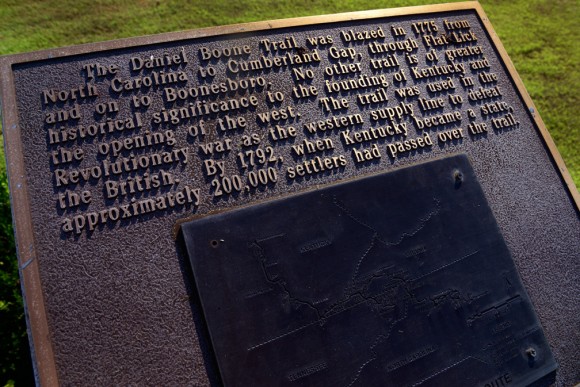
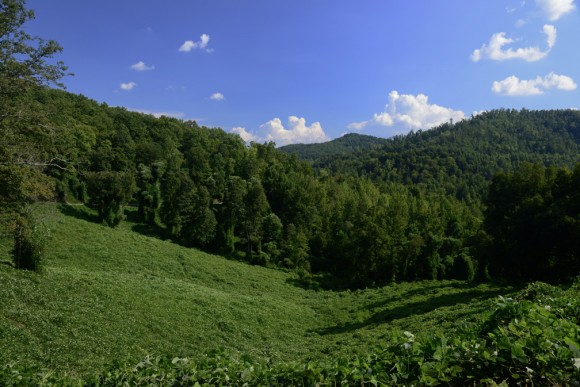

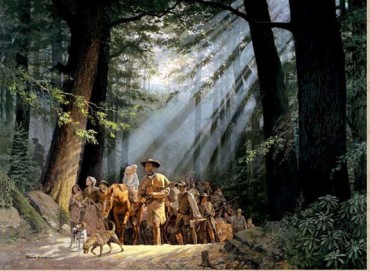
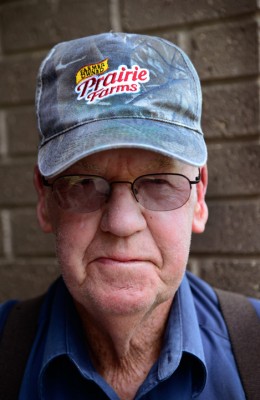

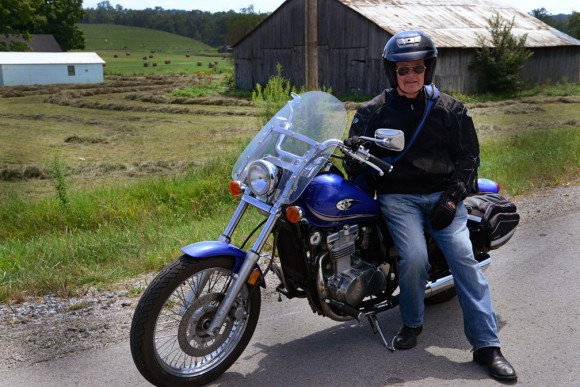
Wow, Bill. That is so cool. Any time I’m in the country I try to image what it was like for the first settlers crossing that area. You are living out my day dreams. What a huge piece of history you are involved in not only exploring but documenting. And along with your son and a doctor-friend. It doesn’t get much better than that.
It has been eye opening.
This is a great story and project! I wish I could have been there to see some of “America’s ” original history!
It is a fantastic journey, at times I felt like Daniel was standing next to me!
That is a great project to be helping with. About 13 years ago I helped several others map about a 15 to 20 mile portion of one of the many “Trail of Tears” from near Dunlap, TN, towards McMinnville, TN. My participation was to go with two or three Boys Scouts, a Scout leader, and a couple of members of the Chattanooga Hiking Club. We carried a GPS that marked our position every 5 minutes. I also had a borrowed copy of a journal written by a man that accompanied the group on the trek to Oklahoma. When in the old growth forest, the old trail is easy to see even though it has been abandoned for decades.
Maybe it’s that I’m getting older, but this history of our country has really grabbed me!
What an inspiring history lesson. Looking forward to project updates!
You’ll get them!
Wow… What fun. Love it!
Hope you’re doing well! Hope to get back down soon!
I wrote a book on my family ancestry. We arrived in Kentucky through the Cumberland Gap around 1783 and settled in what is now Nicholas County. My father was the first of my ancestry to leave Kentucky (his father was the first to leave Nicholas County, but only as far as neighboring Bourbon County where I was later born) and I eventually landed in Texas. Having been born and spent my childhood in Kentucky I still have strong ties to the state, and as required by my Kentucky birth I am a fervent fan of the Wildcats.
Thanks for taking on this important project to help maintain our heritage.
I’ll live it for you!